History
The intent of the History Curriculum
History helps young people to understand the complexity of life, the process of change, the diversity of societies and relationships between different groups. It also helps them to gain a sense of their own identity within a social, political, cultural and economic background.
How is the History Curriculum implemented?
At Sir John Leman High School, students study a broad range of historical settings, some of which are studied in more depth later.
Curriculum Road Map - History
Curriculum Sequencing Plan - History
The impact of the History Curriculum at the end of Key Stage 3
The KS3 History curriculum gives students the skills, knowledge and experience to make an informed decision about pursuing their History studies at GCSE. By the end of Year 9, our students will have developed a range of skills concerning how we analyse past events. This includes being able to comment on the usefulness of sources, and evaluating opinions about historical events and characters. Our curriculum allows students to maximise their potential so that they have every opportunity to study similar subjects later in life. Many of our History students go on the study at A Level and Degree; and from there have embarked on a range of exciting careers.
How is it assessed?
There will be a formal assessment, usually at the end of a unit of work. History is taught in mixed ability groups within bands set by Modern Languages, with 100 minutes per fortnight in year 7 and 200 minutes in years 8 and 9.
How can I help my child?
Some useful and interesting websites include:-
Historyonthenet.com
Parents/carers can support their children by discussing topics with them to enhance debating skills, visiting places of historical interest and most importantly encouraging them to read.






